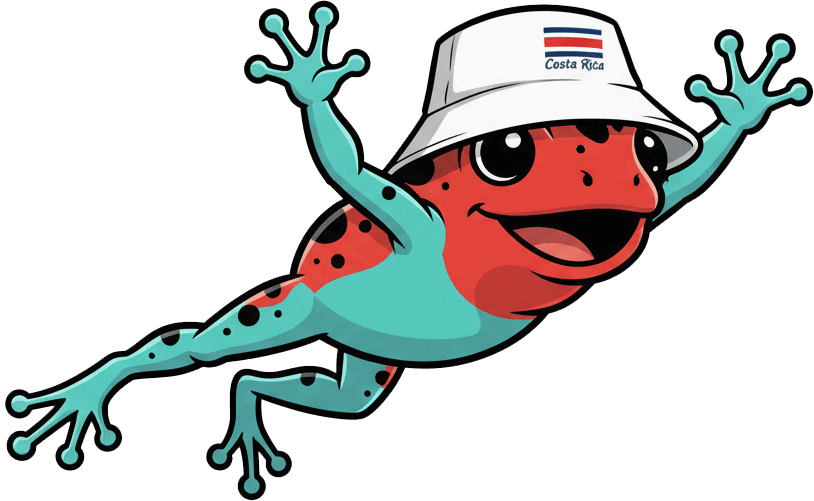Costa Rica is often celebrated for its natural beauty, peaceful democracy, and the famous “pura vida” lifestyle. But beneath the lush rainforests and modern tourist appeal lies a rich cultural history shaped centuries ago by Spanish colonialism. When Spanish conquistadors arrived in the 16th century, they brought language, religion, traditions, and institutions that transformed the region forever. Today, the influence of Spanish colonialism on Costa Rican culture can be seen everywhere—from the words people speak to the architecture of old towns, from religious festivals to national cuisine.
1. Historical Background of Spanish Colonialism in Costa Rica
Spanish colonialism in Costa Rica officially began in the early 1500s, following Christopher Columbus’s arrival on the Caribbean coast in 1502 during his fourth voyage. By the mid-16th century, Spanish settlers established footholds in the central valley, eventually founding Cartago in 1563 as the first permanent settlement and administrative capital.
However, Costa Rica was different from other Spanish colonies:
- Sparse indigenous population: Unlike Mexico or Peru, Costa Rica had fewer large indigenous groups and no powerful empire to conquer.
- Difficult geography: Thick forests, mountains, and poor soil in some areas made large-scale exploitation challenging.
- Limited wealth: Costa Rica lacked gold and silver mines, which made it less attractive to Spain compared to Guatemala or Mexico.
As a result, colonial rule here was considered marginal and relatively poor. But even without massive resources, the Spanish Crown still imposed its systems of governance, religion, and land ownership—laying the foundation for cultural transformation.
2. The Spanish Influence on Costa Rican Language
Perhaps the most obvious legacy of Spanish colonialism is the Spanish language, now the official tongue of Costa Rica.
- Before colonization, multiple indigenous languages were spoken, including Bribri, Cabécar, Maleku, and Chorotega. Today, only a handful survive, spoken by small indigenous communities.
- The spread of Spanish was rapid, aided by missionary efforts and colonial education policies that forced assimilation.
- Over time, Costa Ricans developed their own distinct dialect of Spanish. It is known for:
- The use of “vos” instead of “tú” in informal speech.
- Unique idioms like “pura vida”, which means “pure life” but is used as a greeting, farewell, or expression of happiness.
- A softer, slower pronunciation compared to other Latin American Spanish variants.
Thus, the colonial language became a central pillar of national identity, uniting the population while also erasing much of the indigenous linguistic heritage.
3. Catholicism and Religious Traditions
The Spanish Crown and the Catholic Church worked hand in hand to establish Catholicism as the dominant religion. Missionaries accompanied settlers, building churches and converting indigenous peoples.
Key impacts include:
- Religious festivals: Many of Costa Rica’s most celebrated holidays come directly from Spanish Catholicism.
- Semana Santa (Holy Week) is marked by processions and ceremonies across the country.
- The annual pilgrimage to honor the Virgen de los Ángeles in Cartago draws thousands of people.
- Social influence: For centuries, the Church controlled education and shaped moral values, reinforcing traditional family structures and gender roles.
- Architecture: The construction of colonial churches with adobe, stone, and tile remains a defining feature of Costa Rican towns.
Even today, Catholicism remains the official religion in Costa Rica’s constitution, though the nation is increasingly secular.
4. Spanish Colonial Architecture and Urban Planning
Spanish colonialism also shaped Costa Rica’s built environment. Following Spanish urban planning traditions, settlements were designed around:
- A central plaza, which functioned as the social and economic hub.
- A church, usually the most prominent building facing the plaza.
- Government offices and markets surrounding the square.
Architectural features introduced by Spain included:
- Red clay tile roofs.
- Whitewashed adobe walls.
- Internal courtyards with gardens.
Examples of colonial-style architecture still exist today in Cartago, Heredia, and parts of San José, even though earthquakes destroyed many older structures. The mix of colonial and modern architecture remains a testament to Spanish influence.
5. Agriculture and Economic Influence of Colonial Spain
The colonial economy in Costa Rica was heavily shaped by Spanish agricultural practices:
- Spaniards introduced sugarcane, wheat, bananas, and coffee.
- Indigenous farming techniques were replaced by the hacienda system, where large estates were owned by Spanish elites.
- Coffee, in particular, became Costa Rica’s “golden bean” in the 18th and 19th centuries, fueling economic growth and shaping social hierarchies.
The legacy of this colonial agricultural economy can still be seen:
- Costa Rica remains a major coffee exporter.
- Rural land ownership patterns reflect the colonial hacienda system.
- Agriculture continues to play a symbolic role in Costa Rican identity.
6. Cultural Traditions, Arts, and Daily Life
Spanish colonialism influenced nearly every aspect of Costa Rican daily culture:
Cuisine
- Introduction of rice, wheat, pork, and dairy.
- Fusion with indigenous foods like corn, beans, and tropical fruits.
- Traditional dishes like gallo pinto (rice and beans) embody this blend.
Music and Dance
- Spanish guitar and melodies combined with African rhythms and indigenous elements.
- Folkloric dances like the parade of traditional costumes and marimba music are staples of cultural festivals.
Arts and Crafts
- Religious art, colonial paintings, and pottery flourished under Spanish influence.
- Handicrafts such as oxcarts (carretas) became cultural symbols, originally used in colonial times to transport coffee.
Social Customs
- Spanish norms shaped family roles, patriarchy, and community structures.
- Emphasis on honor, respect, and Catholic rituals in daily life.
7. Indigenous Heritage vs. Spanish Colonial Influence
While Spanish traditions dominate, indigenous culture still survives—though often marginalized:
- Colonial authorities suppressed indigenous languages, religions, and customs, leading to cultural loss.
- Small indigenous groups like the Bribri and Cabécar preserved traditions, often in isolated areas.
- Today, there is growing recognition of indigenous heritage, with efforts to preserve native languages and crafts.
This tension highlights a dual legacy: Spanish colonial culture as the mainstream identity, but indigenous traditions as a vital counterbalance that enriches Costa Rican diversity.
8. Lasting Legacy of Spanish Colonialism in Modern Costa Rica
Even in modern Costa Rica, the influence of Spanish colonialism is evident:
- Language: Spanish remains the unifying national language.
- Religion: Catholic holidays still shape the national calendar.
- Architecture: Central plazas and colonial-style buildings remain iconic.
- Education and law: Many institutions are rooted in Spanish colonial governance.
- Identity: The concept of “pura vida” reflects a cultural blend—rooted in Spanish values of resilience and Catholic spirituality, but adapted into a uniquely Costa Rican outlook.
Yet, Costa Ricans today also challenge and reinterpret colonial history, recognizing the harm done to indigenous populations while embracing the parts of Spanish heritage that contribute to their cultural identity.
Conclusion: The Dual Legacy of Spanish Colonialism
Spanish colonialism left Costa Rica with more than just new rulers—it transformed the very fabric of society. Language, religion, architecture, traditions, and economic systems all bear the mark of Spanish influence. At the same time, indigenous heritage and modern global influences continue to shape the country into a dynamic culture that is uniquely Costa Rican.
Understanding this dual legacy helps explain why Costa Rica is both deeply rooted in its colonial past and proudly independent in its cultural identity. The influence of Spanish colonialism on Costa Rican culture is not just history—it’s a living presence, woven into everyday life and celebrated, questioned, and reimagined with every generation.
Frequently Asked Questions
How did Spanish colonialism impact Costa Rican culture?
It introduced the Spanish language, Catholicism, European agricultural practices, and colonial architecture, which remain central to Costa Rican identity today.
What traditions in Costa Rica come from Spain?
Religious festivals like Semana Santa, colonial architecture, rice-based cuisine, and Catholic rituals all originate from Spanish colonialism.
What are examples of Spanish architecture in Costa Rica?
Historic churches in Cartago and Heredia, colonial-style homes with clay tiles and courtyards, and the layout of towns around a central plaza.
How did Spanish colonialism affect indigenous peoples in Costa Rica?
Many indigenous traditions and languages were suppressed, though some survived in isolated areas and are being revived today.
Why is the Spanish language dominant in Costa Rica?
Spanish became the official colonial language and replaced most indigenous languages, which led to its dominance after independence.


